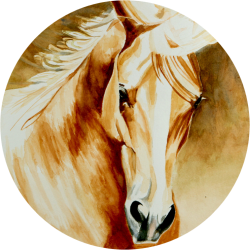Nutrition Basics: Protein and the feed tag dilemma.
By Madison Seamans MS DVM
Did you ever read the tag on a bag of horse feed? For me the tags were confusing because they had lots of numbers, but no pictures. Tags on some products can be downright scary– read the package insert that comes with a bottle of aspirin. Do you want to kill the pain or kill your liver? I don’t get too worried about tags on mattresses and pillows, but some tags are important if you know what they mean.
Our knowledge base for nutrition of man and animals is fairly large, but it is just a vague outline of all that is there. For example, we know how to feed a rat more than any other animal because we have studied them thoroughly as research subjects. In domestic livestock, chickens, pigs and cows, we have a fairly extensive data base on nutritional needs as they have a finite end product. We know how many pounds of corn, hormones and antibiotics it takes to make a bucket of Kentucky Fried Chicken because somebody did the “feed ‘em and weigh ‘em” research.
For the horse, however, we don’t have the luxury of such a common goal. A ration for a performance horse preparing for a 100 mile endurance ride in California will look markedly different than one for a dressage horse in New York. Halter horses, pregnant horses, yard art horses—all have different dietary profiles. In addition, to make these determinations, thousands of animals, under identical conditions (housing, age, breed, sex) are required so the numbers truly reflect the essentials of the group while averaging out the individual variations. It is easy to get 10,000 chickens in one place, try that with 10,000 horses!
Back to feed tags. There is usually a chart with letters and symbols. “CP”, “Mcal”, “DM” and “IU” will be next to a number or a percentage sign (%) or both. The “CP” means crude protein, expressed as a percentage. A 10% CP feed has ten pounds of protein in every 100 pounds of feed. The Mcal symbol is a measure of how much energy (calories) is in the feed. The “IU” symbol stands for international units– vitamins are usually measured this way. The “DM” means “dry matter”. This one is really important because a low percentage “DM” means the feed contains a lot of water. Some bagged hay has about 50% DM, which throws the other numbers off by half. If only 50% of the bag is dry matter, then a 10% CP only has five pounds of protein because half the contents of the bag is water! Below the chart is a list of ingredients in order of their relative amounts. If “corn” is listed first, then corn is present in a greater amount than the rest of the ingredients.
The symbol that causes the most confusion among us horse fanatics is CP. Nitrogen makes up about 1/6 of the weight of protein. If the amount of nitrogen measured in a sample is multiplied by six, an estimate of the protein is calculated. Thus the term “crude protein” has been used for over a century to allow compositional comparison of one feed to another.
Proteins are very large molecules that cannot be absorbed intact. This is why a horse really has NO dietary protein requirement, they have an amino acid requirement. There are ten of these very small molecules essential in the equine diet, but about twenty other amino acids are formed by bacteria in the GI tract. The feed contains large protein molecules which are broken down by enzymes in the gut during the process of digestion. This careful dismantling of protein yields the individual amino acids that are then, in a very complicated process, absorbed one at a time through the wall of the small intestine into the blood stream. Once in the blood vessels, they travel to the various organs of the body. At their destination, hundreds of thousands of amino acids are precisely reassembled by other enzymes to form a single protein. This happens hundreds of millions of times in every body every day. This is no random event. If even one link is misplaced, the function of the entire protein can be destroyed.
Proteins are the structural components of the entire body. They form muscles. They are the scaffolding that supports and directs the construction and repair of all bone, tendon and ligaments. In addition, proteins are the molecular motors that actually construct, repair and maintain all the structures and systems in the body. And this is a short list of protein function.
So all of this begs the question: “How much protein…….OK! amino acid-rich feed does my horse need?” A horse usually consumes 2% of his body weight, or about twenty pounds, daily. (I know a few horses that would claim that ain’t near enough!) So the average thousand pound horse needs a diet of roughly 7% crude protein (a little less than a pound and a half of protein every day). This can be easily provided with just about any hay—oat, alfalfa, grass—whatever the horse likes and is available in your area. If heavy work, pregnancy, lactation or growth are involved, a little more protein is required. The answer to the question is that most horses get enough protein. The problem with maintaining body weight is one of calories, not protein—but that’s a topic for another day. Your local equine veterinarian is a good source of information for specific nutritional questions.

